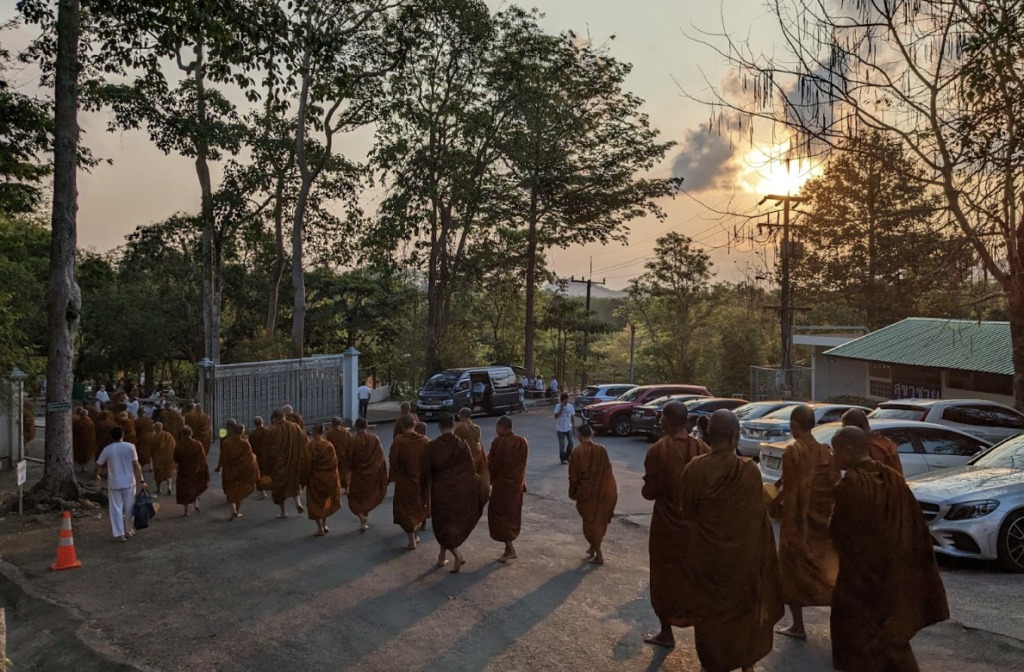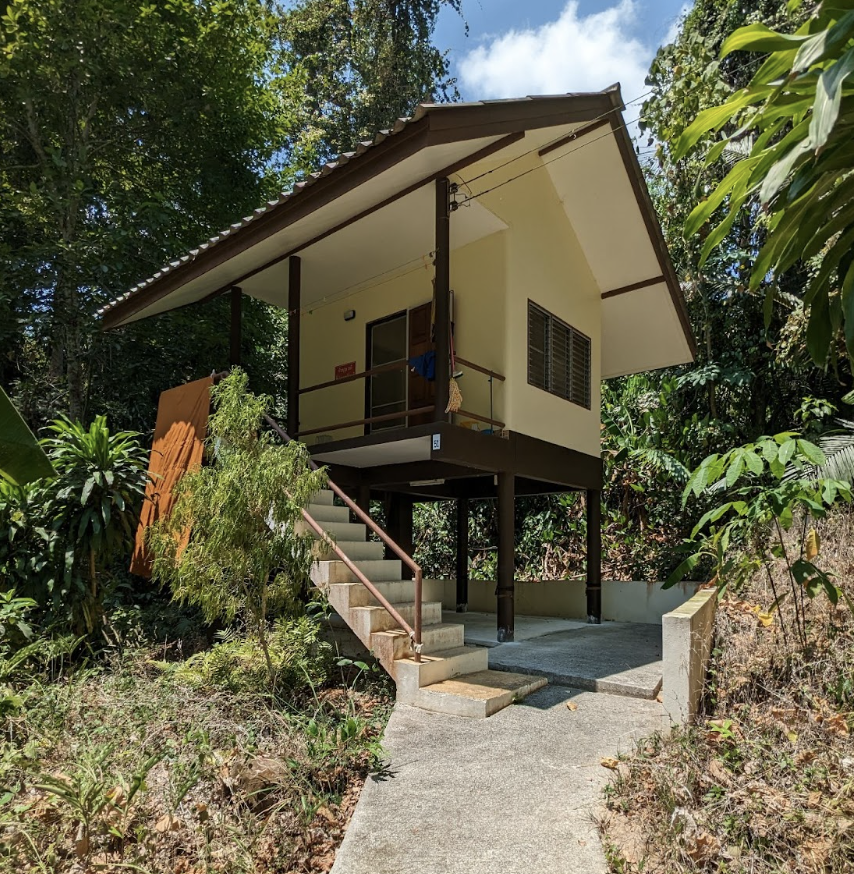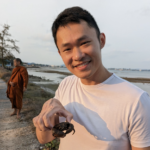TLDR: Discover the practices, and challenges faced by a novice monk at Wat Marp Jan, offering insights into the disciplined and serene world of the Thai Forest Tradition.

Monastic simplicity
Monastic life is simple and straightforward. It is the full-time practice of Buddhist teachings by abandoning lay life and committing all effort and energy to living a holy life. While monastic practices vary from tradition to tradition, chanting and meditation are common practices. The words Bhikkhu and Bhikkhunī mean “one who lives by alms”. 1
In the Theravada tradition, alms rounds are still practised based on the tradition that started back in the Buddha’s time. It is also practised by other traditions such as Thai Plum Village and the Vietnamese Khất sĩ tradition.
I spent a month as a novice monk (sāmaṇera) at Wat Marp Jan in Thailand which is part of the Thai Forest Tradition of Theravada Buddhism. The Thai Forest Tradition focuses on strict adherence to the monastic code – the Vinaya – prescribed by the Buddha, as well as certain training rules laid down by teachers of the tradition (Kor Wat).
For instance, we were required to kneel or sit before drinking water and not while standing. The abbot Ajahn Anan (who we address as Luang Por i.e. venerable father) was a disciple and personal attendant of Ajahn Chah.
“They laid down this system of practice for people who are still in training, or newcomers, who wish to learn how to restrain their body and speech. This in turn causes the heart to become peaceful and orderly. Our external behaviour will also look beautiful. We become ones who speak little, sleep little, and are wakeful with perseverance in order to abandon all of the various wrong views and conceit.”
– Tan Ajahn Anan
The day starts at 4.30am
As a novice I abided by 10 precepts, which is essentially 8 precepts plus not to accept money. My daily routine at Wat Marp Jan involved waking at 4:30am to get dressed and bring my alms bowl to the eating hall (Haw Chan) at the foot of the mountain (Khao Yai Da) where the monastery is located.
Morning chanting starts at 5am and ends at 5:30am after a short meditation session. Thereafter, the monks would adjust their upper robes from baring the right shoulder to covering both shoulders as they must be fully covered in inhabited areas.

(Photo by Mae Chee Amy)
Alms round: Eating whatever is available
I walked a few different routes for alms round, starting with the shortest (2.5km total) and graduating to one that was longer (4km total). When returning from alms, most monastics would provide food collected to a communal pool while some undertake the optional ascetic practice to only eat what they received individually.
This practice of piṇḍapāta dhutaṅga or dtòk-bāht helps the monastic to develop greater awareness of his/her reliance on lay supporters along with gratitude and contentment with whatever one receives.
After alms round, we would come back to the monastery to rest and meditate before meal time. At about 7.15am, the monks will start taking their food by order of seniority after the laypeople have assembled and started chanting.
As a novice, I waited until all the Bhikkhus had collected their food before a signal was given to me, indicating that I could proceed to take food from the tables. This is because Bhikkhus can only touch what has been offered to them but novices are not bound by this rule as only fully ordained monks are required to abide by the 227 pātimokkha rules.
The rules also creates the effect where novices and laypeople would render an item unoffered if they touch it after it had been offered.
When it was my turn the number and likelihood of perceived higher-value items (e.g. fried chicken, moo ping) tended to be lower, but it was ok as there was enough food to go around. It helped that there was usually enough dessert and sweets for a sweet tooth like me 😃.
At about 8am, Ajahn Anan and the monastics will provide the blessing to the laypeople for their support (as well as to the departed). The blessing chant starts with these beautiful verses spoken by Luang Por:
Yathā vārivahā pūrā
Paripūrenti sāgaraṁ
Evam-eva ito dinnaṁ
Petānaṁ upakappati.
Icchitaṁ patthitaṁ tumhaṁ
Khippameva samijjhatu
Sabbe pūrentu saṅkappā,
Cando paṇṇaraso yathā
Maṇi jotiraso yathā.
Just as rivers full of water
fill the ocean full,
even so does that here given
benefit the departed spirits.
May whatever you wish or want quickly come to be,
may all your aspirations be fulfilled,
as the moon on the fifteenth (full moon) day,
or as a radiant, bright gem.
Food is nourishment for our body and mind
At meal time, I practised pattapiṇḍika dhutaṅga (chan-nai-bāht) which is putting all of the food one eats into the bowl and (optionally) mixing them together. I found it edifying as it turns eating into a meditative practice and helps to reduce craving and preferences related to food.

While curry and fruit (and sometimes dessert) mixed together may look unappetising, it was helpful to look at the bowl of food before eating and say “I eat only to survive” as it eases the practitioner into a mindstate of acceptance.
While eating mindfully, I attended to the fact that the taste of the bowl’s contents has not changed and the food is still tasty (Thai food is always good lol).
I would also recommend chewing and swallowing edible stuff that we usually spit out, such as watermelon seeds, grape seeds and even egg shells if they are in the bowl. Since it makes no difference to our bodies, why not use them as a training opportunity to let go of small preferences?
Having one meal a day was a challenge that took some getting used to.
There were days where my tummy ached from eating too much and there were days where it ached from eating too little. After some trial and error, it became easier to gauge sufficiency by the extent the bowl was filled.
After the meal, we would wash our bowls at the washing area beside the eating hall. Ajahn Stuart (the most senior non-Thai monastic) encouraged us to help other monks by offering to collect their food waste to discard at the rubbish point a distance away.
Although it was a small act of service, it brought me joy to provide (as well as receive) this bit of convenience. In lay life, it is also highly beneficial and meritorious to help others with such little acts of kindness.
Living space and daily chores
After meal time, the monks would clean up the eating hall and have free time for rest and self-practice until 3pm. I stayed in a small hut called a kuṭi. Living in a small and spartan hut took some getting used to, but it was nice having a quiet space to rest, meditate and contemplate.


Chores are done from 3 to 5pm. I cleaned the toilet near the ordination hall (Uposatha Hall) as well as the stupa (Chedi).
Chores are a great training tool, especially for someone like me who is exempt from cleaning toilets for most of my life.
While there was some initial uncertainty and aversion to unpleasant smells, there was always a sense of satisfaction when the toilet became spotless for the benefit of everyone, and quite a bit of patience developed in the process!
Night Falls
At 7pm to 9pm, there would be evening chanting and meditation at the ordination hall. Thereafter it would usually be bedtime for me, except on observance days (Uposatha / Wan Phra) where I would try to practise more by circumambulating the stupa and sleeping less.
When I first came to Wat Marp Jan as a retreatant, I was very resistant to circumambulating the stupa. Interestingly, Luang Por specifically asked me to do it 108 times (haha).
It is common for forest tradition monastics to practise nesajjika dhutaṅga. It literally means to refrain from lying down, and is more commonly practised on observance days where a number of monks would go without sleeping for a night.
That being said, some monks practise nesajjik during the 3-month rains retreat, some practise every night but lie down in the day, while some never lie down at all.
Nesajjik trains one’s effort and patience as well as reveals more of one’s defilements. When the body is tired, the mind tends to become less restrained.
This point leads to my next article where we can further explore some monastic lessons for lay life.
Wise Steps:
- Cultivate Gratitude: Practise gratitude for the basic necessities, mirroring the monastics’ reliance on alms and communal support.
- Embrace Simplicity: Reflect on your daily life and consider pruning the unnecessary to focus on what truly matters.
- Practice Mealtime Mindfulness: During meals, adopt the practice of mindful eating, being in the present moment and accepting each bite without liking or disliking
References:
- Buddhist Dictionary, Manual of Buddhist Terms and Doctrines by Nyanatiloka Mahathera


